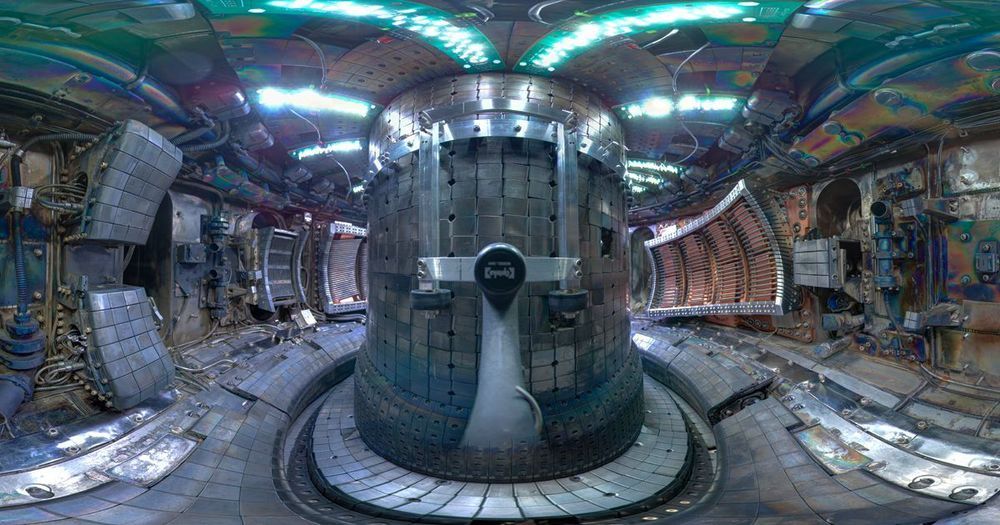Page 9060
Mar 5, 2019
A 10-million-pound undersea cable just set an internet speed record
Posted by Genevieve Klien in category: internet
Undersea cables are the backbone of the internet. Connecting places like the United States to Europe, or France to India, these submarine fiber optic cables permit the world’s web traffic to flow.
One such cable is called Marea. It runs from Virginia Beach in the U.S. to Balboa, Spain. And recently, a company called Infinera announced that it had broken a record for how much data it could send through this cable in a second. It’s a mind-boggling amount. Below, we break down everything you wanted to know about undersea cables and this experimental accomplishment, by the numbers.
That’s the total number of undersea cables in use right now, according to a company called TeleGeography, which conducts telecom market research. Modern cables use fiber optics and lasers to transmit data. Major cables complete key connections like New Jersey and Praia Grande, Brazil, or Australia to Indonesia to Singapore. Take a look at a beautiful, interactive map here.
Mar 5, 2019
Sealed Maya ‘ritual cave’ untouched for 1,000 years contains trove of stunning relics
Posted by Genevieve Klien in category: futurism
Archaeologists in Mexico have discovered a sealed Maya “ritual cave” containing a trove of relics that offer new clues about the ancient civilization.
The cave system, which researchers believe had been sealed for 1,000 years, is known as Balamku or “Jaguar God,” and contains at least 150 stunning objects. The findings were announced at a Monday press conference in Mexico City.
According to researchers, the cave’s difficult access and structure increase its sacred qualities, suggesting that it was used for rituals.
Mar 5, 2019
Triton is the world’s most murderous malware, and it’s spreading
Posted by Genevieve Klien in category: cybercrime/malcode
The rogue code can disable safety systems designed to prevent catastrophic industrial accidents. It was discovered in the Middle East, but the hackers behind it are now targeting companies in North America and other parts of the world, too.
Mar 5, 2019
NSA releases agency-designed cybersecurity tool to the public
Posted by Genevieve Klien in categories: cybercrime/malcode, privacy
Mar 5, 2019
A Japanese Home Designed Around a Climbable Earthquake-Proof Bookshelf
Posted by Quinn Sena in category: habitats
Floor-to-ceiling bookshelves are lovely, and can act as a robust focal point in any home, though accessing the high shelves can be a problem. The common sidekick has always been ladders which can also add character and charm, but for smaller homes like in Japan they can be a nuisance, occupying too much space for not enough usage. Japanese architect Shinsuke Fujii came up with a simple, yet brilliant solution that solves another problem too: earthquake safety.

The “House in Shinyoshida,” as it’s called, named for the neighborhood in Yokohama where it stands, was conceived shortly after the 2011 Tohoku Earthquake. The client, who happened to be an avid book lover, approached Fujii with the task to design a home around a large bookshelf that’s both easily accessible but also one that won’t spill all the books if there’s ever a tremor.
Continue reading “A Japanese Home Designed Around a Climbable Earthquake-Proof Bookshelf” »
Mar 5, 2019
AEgIS makes positronium for antimatter gravity experiments
Posted by Quinn Sena in category: particle physics
The universe is almost devoid of antimatter, and physicists haven’t yet figured out why. Discovering any slight difference between the behaviour of antimatter and matter in Earth’s gravitational field could shed light on this question. Positronium atoms, which consist of an electron and a positron, are one type of atimatter atoms being considered to test whether antimatter falls at the same rate as matter in Earth’s gravitational field. But they are short-lived, lasting a mere 142 nanoseconds – too little to perform an antimatter gravity experiment. Researchers are therefore actively seeking tricks to make sources of positronium atoms that live longer. In a paper published today in the journal Physical Review A, the AEgIS collaboration at CERN describes a new way of making long-lived positronium.
To be useful for antimatter gravity experiments, a source of positronium atoms needs to produce long-lived atoms in large numbers, and with known velocities that can be controlled and are unaffected by disturbances such as electric and magnetic fields. The new AEgIS source ticks all of these boxes, producing some 80 000 positronium atoms per minute that last 1140 nanoseconds each and have a known velocity (between 70 and 120 kilometres per second) that can be controlled with a high precision (10 kilometres per second).
The trick? Using a special positron-to-positronium converter to produce the atoms and a single flash of ultraviolet laser light that kills two birds with one stone. The laser brings the atoms from the lowest-energy electronic state to a long-lived higher-energy state and can select among all of the atoms only those with a certain velocity.
Continue reading “AEgIS makes positronium for antimatter gravity experiments” »
Mar 5, 2019
Cuba has a lung cancer vaccine. Many U.S. patients can’t get it without breaking the law
Posted by Quinn Sena in categories: biotech/medical, law
President Trump’s tightened travel to Cuba makes it harder to go there. Some U.S. cancer patients say they have no other options.
Mar 5, 2019
Scientists Discovered a New Way to Stabilize Fusion Reactions
Posted by Quinn Sena in category: futurism
Nuclear fusion could be a source of nearly unlimited electricity — if scientists can stabilize the reactions.
Mar 5, 2019
The cosmic vision of Jeff Bezos
Posted by Genevieve Klien in categories: futurism, space travel
Blue Origin’s founder explains how New Shepard and New Glenn enable humanity’s future in the solar system.
This article originally appeared in the Feb. 25, 2019 issue of SpaceNews magazine.
Jeff Bezos is not a man of little dreams. The world’s richest person, with an estimated net worth of more than $130 billion, is spending some of his wealth on his space startup, Blue Origin. Much of the attention that the company has received has focused on the billions he’s invested into the company, its plans to fly tourists on its suborbital New Shepard vehicle and its entry into the orbital launch market with its New Glenn rocket.


















